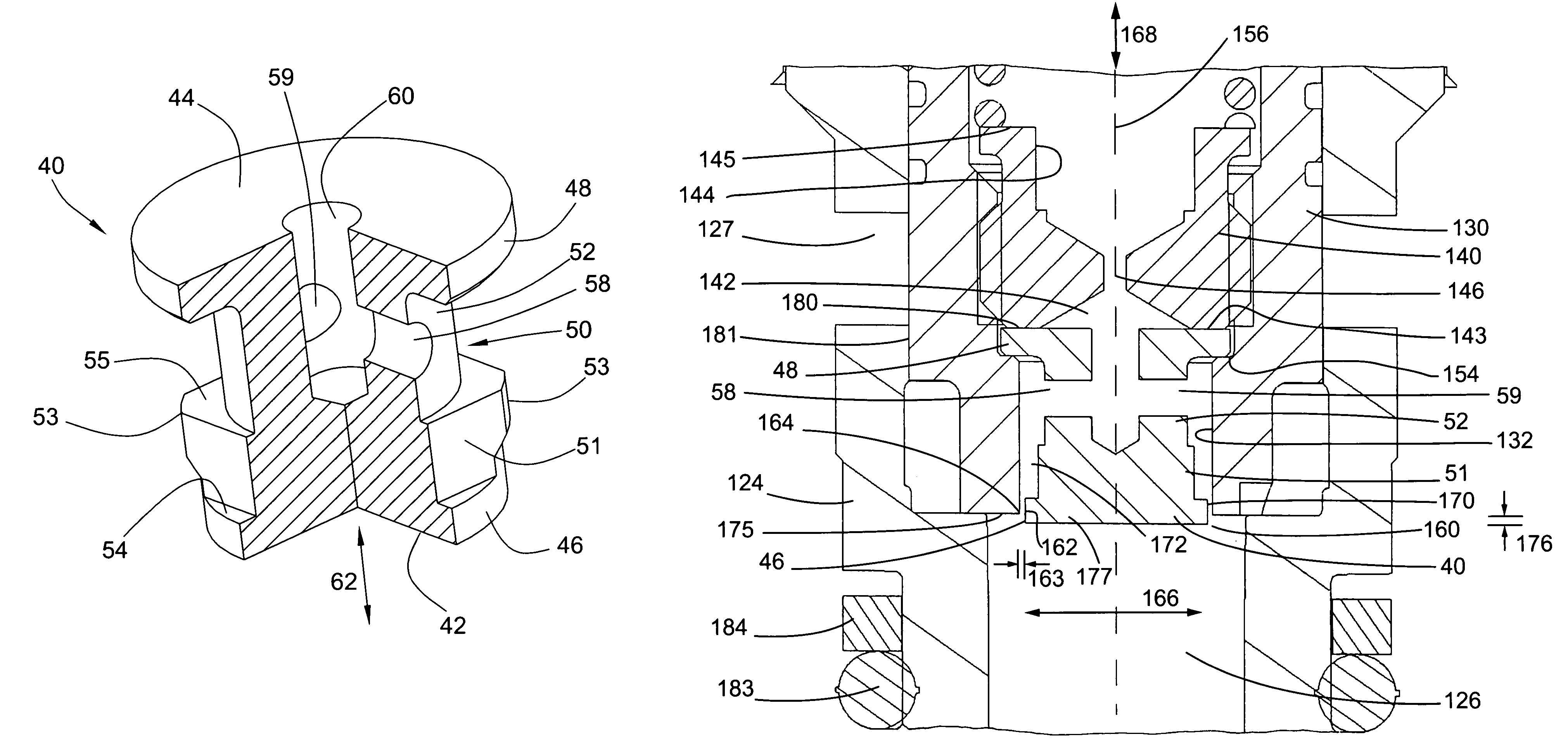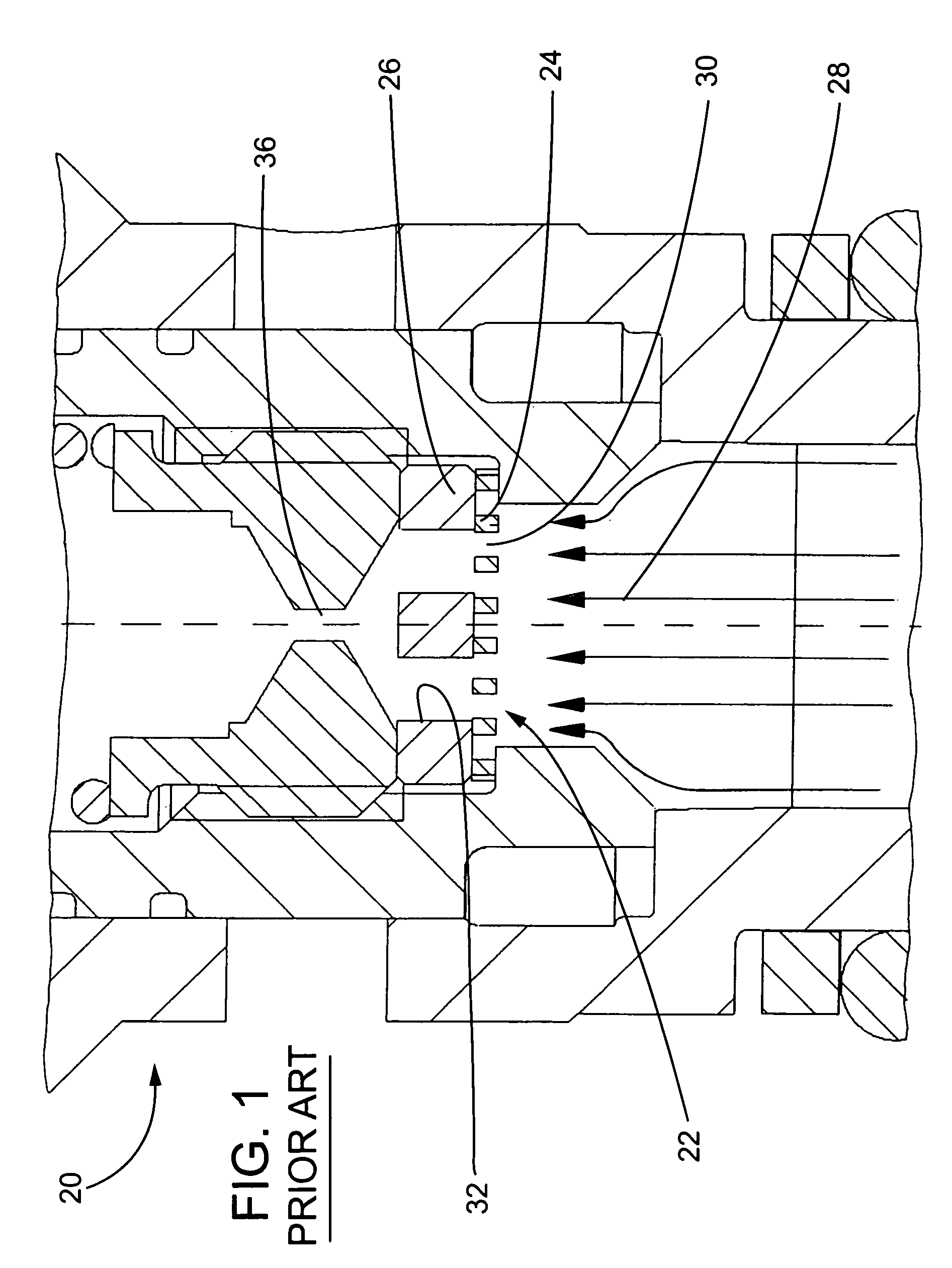Self-cleaning filter
a filter and self-cleaning technology, applied in the field of hydraulic valves, can solve the problems of affecting the operation of the valve, and the most frequent failure of the typical hydraulic system, and achieve the effects of reducing the number of filters, ensuring the cleanliness of the fluid, and ensuring the cleanliness of the filter
- Summary
- Abstract
- Description
- Claims
- Application Information
AI Technical Summary
Benefits of technology
Problems solved by technology
Method used
Image
Examples
Embodiment Construction
[0028]Referring to FIG. 1, a typical prior art valve 20 is shown. The valve 20 includes a filter assembly 22 with a perforated screen disk 24 and an additional support disk 26. A flow 28 of fluid entering the filter assembly 22 can pass through a plurality of passage openings 30 in the screen disk 24 and openings 32 of the support disk 26, which are relatively larger than the passage openings 30 of the screen disk 24, to a pilot orifice 36.
[0029]Referring to FIG. 2, an embodiment of a filter 40 according to the present invention is shown. The filter 40 is generally cylindrical. The filter 40 can include an entrance end 42 and an exit end 44 with the entrance end having an entrance head in the form of a passage flange 46 and the exit end having a mounting flange 48. The flanges 46, 48 are generally circular. A body portion 50 of the filter includes first and second sections 51, 52 which have different shapes from each other. The first section 51 is generally square-shaped, including ...
PUM
| Property | Measurement | Unit |
|---|---|---|
| size | aaaaa | aaaaa |
| length | aaaaa | aaaaa |
| offset distance | aaaaa | aaaaa |
Abstract
Description
Claims
Application Information
 Login to View More
Login to View More - R&D
- Intellectual Property
- Life Sciences
- Materials
- Tech Scout
- Unparalleled Data Quality
- Higher Quality Content
- 60% Fewer Hallucinations
Browse by: Latest US Patents, China's latest patents, Technical Efficacy Thesaurus, Application Domain, Technology Topic, Popular Technical Reports.
© 2025 PatSnap. All rights reserved.Legal|Privacy policy|Modern Slavery Act Transparency Statement|Sitemap|About US| Contact US: help@patsnap.com



